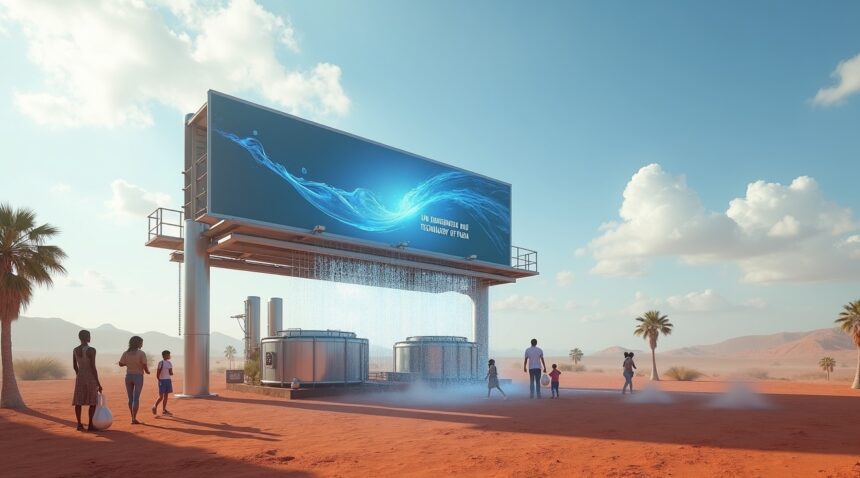Revolutionizing Advertising and Water Access in Peru
Peru’s University of Engineering and Technology (UTEC) has ingeniously transformed traditional advertising infrastructure by developing a billboard that produces clean drinking water directly from the desert air. This breakthrough innovation not only serves its promotional purpose but also addresses the severe water shortage affecting more than 700,000 residents in Lima who lack access to potable water.
The revolutionary technology employs atmospheric water generation paired with reverse osmosis purification. By harnessing Lima’s high humidity levels—typically ranging between 90-98%—this solution provides an efficient and sustainable source of clean water in a region that receives less than one inch of rainfall per year.
Key Takeaways
- The billboard generates about 96 liters (25 gallons) of drinkable water each day, with over 9,450 liters produced in the first three months of operation.
- Installation costs are relatively low at $1,200, making this a cost-effective and scalable solution for other water-scarce regions globally.
- The system thrives in Lima’s coastal environment, where high humidity contrasts sharply with minimal rainfall, making traditional water collection methods ineffective.
- Water extraction is powered by five atmospheric generators paired with carbon filtration and reverse osmosis to ensure purity levels akin to commercial bottled water.
- The billboard functions dually as an advertising platform and public water source, with ad revenues helping to subsidize operational costs.
To learn more about this innovative project and its impact, visit UTEC’s official website.
A Revolutionary Billboard Produces 96 Liters of Clean Water Daily from Desert Air
I find the innovation emerging from Peru’s arid landscape truly remarkable. The University of Engineering and Technology of Peru (UTEC), working alongside ad agency Mayo DraftFCB, has created something that challenges conventional thinking about advertising infrastructure. Their billboard doesn’t just display messages—it extracts moisture from desert air and converts it into clean drinking water.
Impressive Daily Water Production
The numbers speak for themselves when examining this groundbreaking technology. This pioneering billboard generates approximately 96 liters of clean drinking water every single day, which translates to about 25 gallons that local families can rely on. During its first three months of operation, the system produced an impressive 9,450 liters of drinking water—roughly 2,500 gallons that directly benefited dozens of families in the Bujama District, located just south of Lima.
I’m particularly struck by how this innovation addresses a critical need in Peru’s coastal desert regions, where humidity levels remain high despite minimal rainfall. The billboard harnesses this atmospheric moisture through essential building blocks of condensation technology, creating a sustainable water source where traditional infrastructure might prove challenging to implement.
Cost-Effective Solution with Maximum Impact
The financial aspect makes this innovation even more compelling. UTEC reported the initial installation cost at approximately $1,200, making it surprisingly affordable given the significant impact it provides to local communities. This price point suggests the technology could scale effectively across other water-scarce regions, particularly in developing areas where unusual weather patterns and climate challenges create water access issues.
I observe that this cost-effectiveness stems from the billboard’s dual functionality—it serves its primary advertising purpose while simultaneously addressing a fundamental human need. The system operates continuously, requiring minimal maintenance while producing consistent results that directly support community health and well-being.
The Bujama District installation demonstrates how creative engineering can transform everyday infrastructure into life-sustaining resources. Rather than simply occupying space along highways, this billboard actively contributes to solving water scarcity challenges that affect millions across Peru’s desert regions. The success of this initial project has already sparked discussions about expanding similar installations throughout Latin America, where comparable climate conditions could support this liquid transformation technology on a larger scale.
https://www.youtube.com/watch?v=FWwii1dAih8
Lima’s Extreme Water Crisis: 700,000 People Without Clean Water in One of Earth’s Driest Places
Lima faces one of the most paradoxical water crises on the planet. The city sits at the edge of the Atacama Desert, one of the driest places on Earth, receiving less than one inch of rain per year. This extreme aridity creates devastating consequences for millions of residents who struggle daily to access clean water.
The Staggering Scale of Water Scarcity
The numbers paint a stark picture of Lima’s water emergency. Around 700,000 people in Lima lack access to clean water for drinking or bathing, while another 600,000 rely on water delivered by cisterns. These cistern deliveries prove both costly and unreliable, leaving families uncertain about their next water supply. Traditional wells throughout the city often contain polluted water, making them unsuitable for human consumption.
This water scarcity forces residents into impossible choices. Families must decide between purchasing expensive cistern water or risking their health with contaminated alternatives. The inefficient cistern delivery system creates additional hardships, as schedules remain unpredictable and costs continue rising beyond many families’ means.
The Humidity Paradox
Lima’s location creates a fascinating meteorological contradiction. Despite receiving virtually no rainfall, humidity levels often reach between 90% and 98% due to the city’s coastal proximity to the Pacific Ocean. This creates a unique situation where massive amounts of water vapor hang in the air above a population desperately needing clean drinking water.
The Pacific Ocean’s influence generates consistent moisture that blankets the city in thick fog and high humidity throughout much of the year. This atmospheric water represents an untapped resource that could potentially address the crisis, yet traditional water infrastructure fails to capture this abundant moisture. The contrast becomes even more striking when considering that innovative solutions could transform this atmospheric humidity into life-sustaining drinking water.
Recent technological advances have begun exploring ways to harness Lima’s atmospheric moisture. Some initiatives have demonstrated how scientific breakthroughs can inspire practical applications for water generation. While these developments show promise, the immediate need remains urgent for Lima’s water-stressed population.
The city’s unique climate conditions create both the problem and potential solutions. Lima’s residents continue adapting to water scarcity while hoping for innovative approaches that can transform their humid air into the clean water they desperately need for survival.
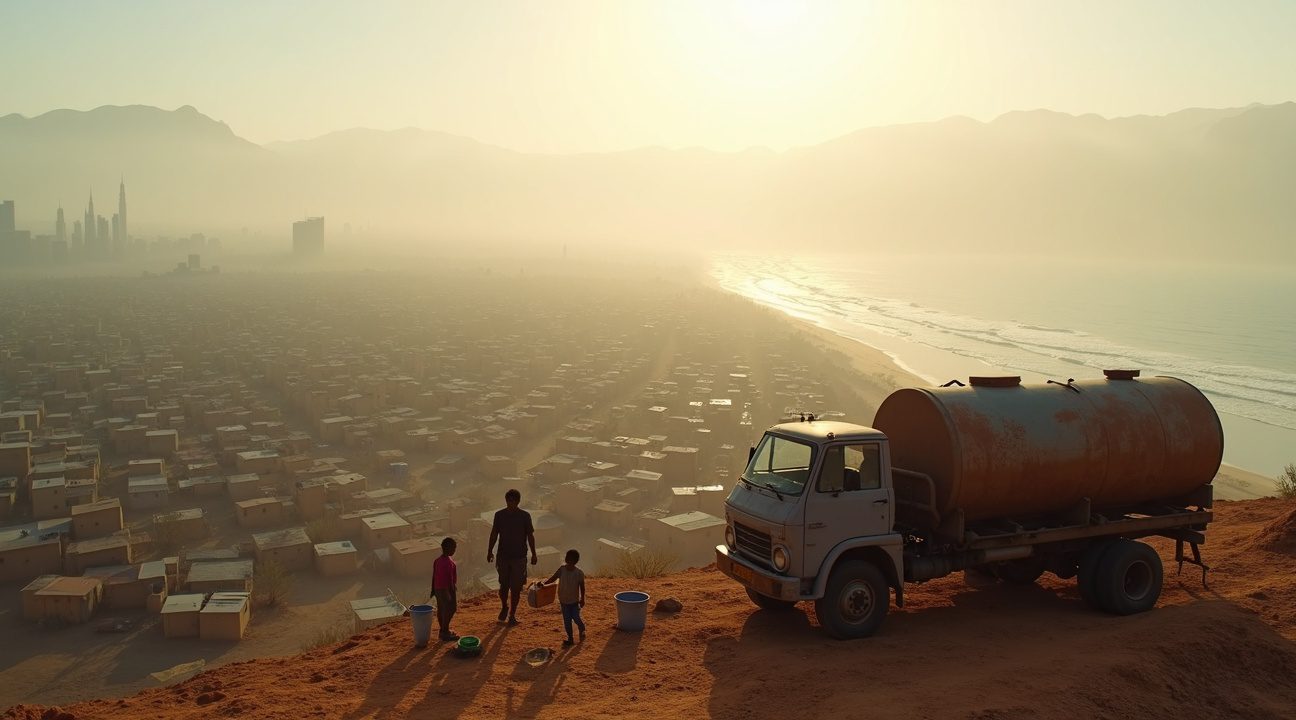
How the Billboard Transforms Air into Pure Drinking Water Through Reverse Osmosis
I’ve examined how these innovative billboards harness atmospheric moisture through a sophisticated multi-stage process that delivers clean drinking water to communities. Air filters capture humidity from the surrounding atmosphere, creating the foundation for this remarkable water generation system.
The Complete Water Extraction and Purification Process
The billboard operates through several integrated components that work together seamlessly. Five water extraction devices, functioning as condensers, form the core of this system by capturing moisture from humid air and converting it into liquid form. These condensers cool the incoming air below its dew point, causing water vapor to condense into droplets that can be collected.
Once condensation occurs, the system channels this raw water through carbon filters that remove impurities, odors, and chemical contaminants. Air filters ensure that only clean atmospheric moisture enters the condensation chambers, preventing dust and airborne particles from compromising water quality. The reverse osmosis process then takes over, pushing the filtered water through semi-permeable membranes under pressure to eliminate remaining contaminants, bacteria, and dissolved solids.
Storage occurs in 20-liter tanks positioned either at the base of the billboard or integrated within its scaffolding structure. These tanks maintain the purified water’s quality while providing adequate capacity for community use. A simple faucet or tap installed at the billboard’s base allows residents easy access to the clean water without requiring complex infrastructure or technical knowledge.
City power lines supply electricity to run the condensers and filtration units continuously. This connection ensures consistent operation throughout varying weather conditions, though the system works most effectively in areas with higher humidity levels. The electrical components include:
- Pumps for the reverse osmosis system
- Fans for air circulation
- Control systems that monitor water quality and production rates
Water production varies based on atmospheric conditions, but these systems can generate substantial quantities even in moderately humid environments. Much like how NASA scientists find essential compounds in unexpected places, these billboards discover water resources in ordinary air that most people never consider accessible.
The reverse osmosis component distinguishes this system from simple condensation methods by ensuring water meets drinking standards. Traditional condensation might capture moisture, but reverse osmosis removes microscopic contaminants that could pose health risks. Pressure pumps force water molecules through membranes with pores smaller than most contaminants, creating water purity levels comparable to bottled water.
Maintenance requirements remain minimal due to the system’s straightforward design. Filter replacements occur periodically, while the reverse osmosis membranes require occasional cleaning or replacement depending on local air quality. The automated nature of the process means communities don’t need specialized training to access clean water from these installations.
Temperature fluctuations actually benefit the condensation process, as greater differences between day and night temperatures increase moisture extraction efficiency. Coastal areas and regions with consistent humidity provide optimal conditions, though the technology adapts to various climatic conditions through adjustable settings and component configurations.
The integration of advertising space with water production creates a sustainable funding model for ongoing operations. Billboard rental fees can offset electricity costs and maintenance expenses, making these installations financially viable for both advertisers and communities. This dual-purpose approach transforms traditional advertising infrastructure into life-saving utilities.
Similar innovations continue emerging globally, proving that unexpected solutions often hide in plain sight. Just as unusual weather phenomena can surprise communities, these water-generating billboards demonstrate how conventional structures can serve extraordinary purposes when enhanced with appropriate technology.
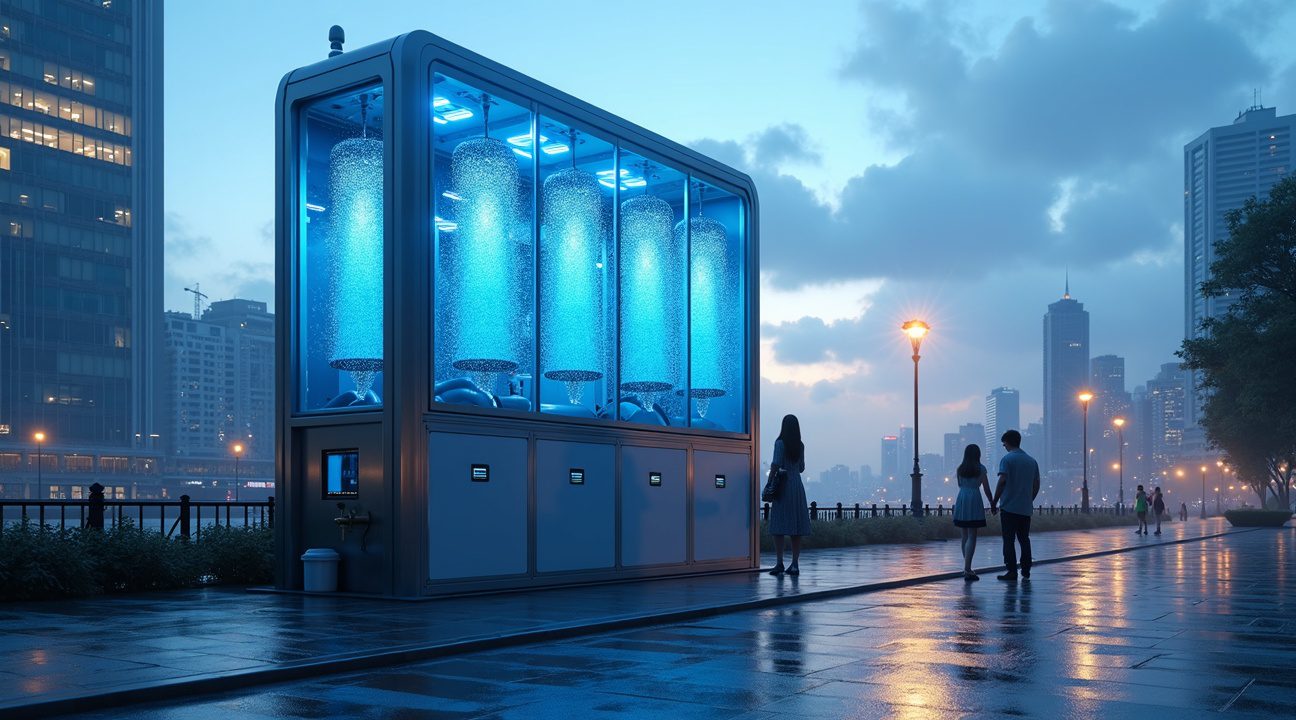
Dual-Purpose Innovation: Marketing Engineering Excellence While Solving Real-World Problems
UTEC’s billboard project showcases how advertising infrastructure can transcend traditional marketing boundaries to address pressing community needs. This innovative campaign transforms passive promotional space into active infrastructure that delivers essential resources while simultaneously attracting potential engineering students through real-world demonstration of technical capabilities.
Strategic Marketing Through Problem-Solving
The billboard functions as a powerful recruitment tool by showcasing UTEC’s engineering excellence through tangible results. Prospective students witness firsthand how creative engineering solutions can tackle significant challenges, making the value proposition clear and compelling. The project attracts attention not through flashy graphics or catchy slogans, but through genuine problem-solving that benefits the local community.
The campaign strategy leverages green technology and sustainable solutions to position UTEC as an institution that produces engineers capable of creating meaningful change. Students considering their educational options see concrete evidence of the type of innovative thinking and practical application they can develop through UTEC’s programs. This approach proves far more effective than traditional advertising methods because it demonstrates rather than simply promises results.
The marketing impact extends beyond immediate enrollment goals. Media coverage and social sharing amplify the project’s reach, generating widespread awareness of UTEC’s capabilities. The billboard becomes a conversation starter about engineering education and its potential to address global challenges, positioning the institution as a leader in sustainable technology development.
Community benefits reinforce the marketing message by creating genuine goodwill. Local residents experience direct value from UTEC’s presence, establishing positive associations with the institution and its graduates. This community connection helps build long-term relationships that support the university’s mission and reputation.
The project illustrates how advertising infrastructure can provide renewable solutions by utilizing existing resources in innovative ways. Rather than consuming additional land or materials for water production facilities, the billboard maximizes utility from space already designated for promotional purposes. This efficiency demonstrates the type of resource optimization that characterizes excellent engineering practice.
The billboard offers completely free access to clean drinking water, removing financial barriers that might prevent community members from obtaining this essential resource. This accessibility reinforces the project’s social impact while showcasing how engineering solutions can democratize access to basic necessities. The renewable nature of atmospheric water generation ensures consistent availability without depleting local water sources or requiring ongoing supply chains.
The project’s success has inspired similar initiatives that combine marketing objectives with community service. Other educational institutions and companies recognize the potential for creating promotional campaigns that deliver genuine value beyond brand awareness. This model demonstrates how innovative solutions can emerge when organizations think creatively about their infrastructure investments.
The local impact proves particularly significant in areas where traditional water infrastructure faces challenges. The billboard provides an immediate solution that doesn’t require extensive construction or ongoing maintenance of complex distribution systems. Community members can access clean water directly at the source, eliminating transportation costs and time barriers that might otherwise limit access.
UTEC’s approach shows how educational institutions can use their expertise to create marketing campaigns that genuinely serve their communities. The billboard becomes a permanent testament to the university’s values and capabilities, continuously reinforcing its message through daily operation rather than temporary promotional displays. This sustainable approach to marketing creates lasting impact that extends far beyond traditional campaign durations.
The project’s integration of marketing and engineering excellence creates a powerful model for future campaigns. Organizations seeking to demonstrate their capabilities while contributing to community welfare can adapt this approach to address various local challenges. The billboard proves that advertising infrastructure can become community infrastructure when organizations commit to creating genuine value alongside promotional objectives.
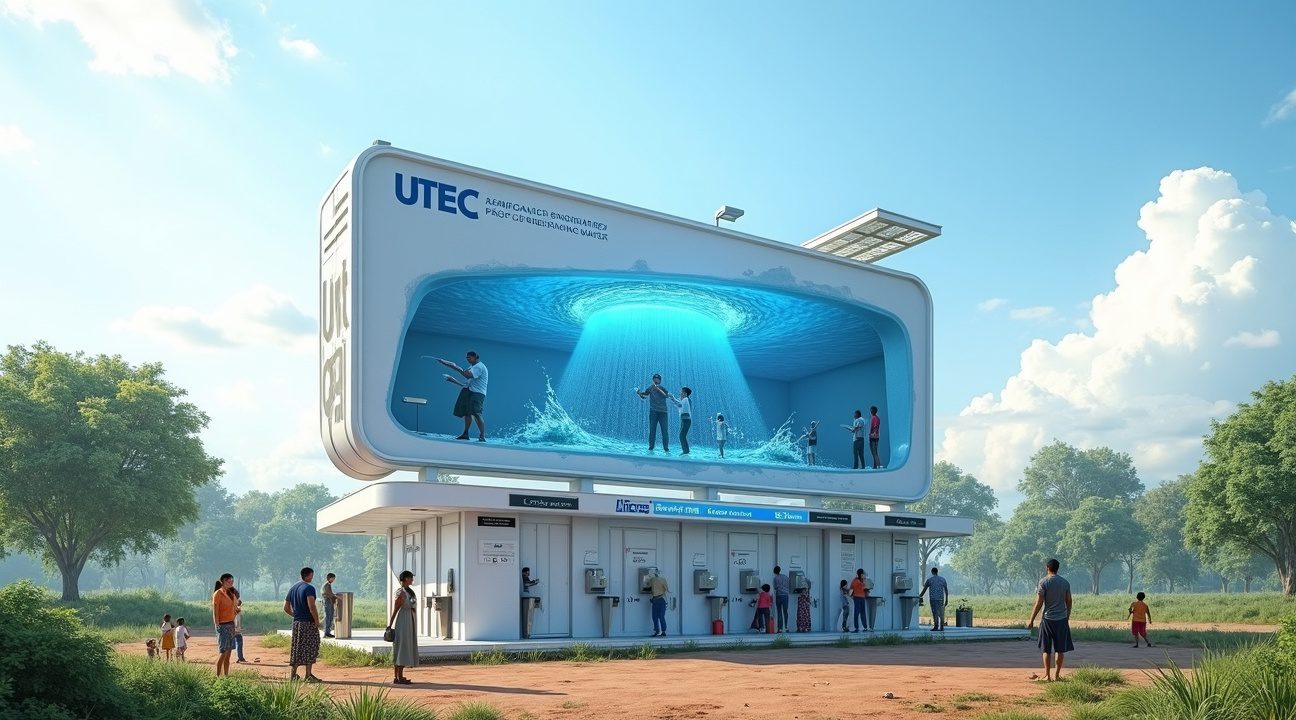
Global Impact: Inspiring Water Solutions for Other Desert Regions Worldwide
Peru’s innovative billboard water system has captured international attention, sparking conversations about replicating this technology across the globe. The project’s success demonstrates how creative engineering can transform everyday infrastructure into life-saving resources, much like how scientists find essential building blocks in unexpected places.
Identifying Suitable Locations for Expansion
Water-stressed regions with high humidity levels present ideal candidates for billboard condensation technology. Coastal desert areas in Chile, Morocco, and parts of Australia share similar atmospheric conditions to Lima, making them prime locations for deployment. The technology works best in environments where relative humidity exceeds 60 percent, even during dry seasons.
Urban planners and humanitarian organizations are examining cities like Antofagasta in Chile’s Atacama Desert and Casablanca in Morocco as potential sites. These locations experience the same coastal desert climate that makes Lima’s system so effective. The combination of water scarcity and sufficient atmospheric moisture creates perfect conditions for atmospheric water generation.
International Support and Scaling Efforts
Global organizations recognize the potential for widespread implementation of this technology. The United Nations has expressed interest in supporting pilot projects that adapt Peru’s model to different geographic contexts. Water aid organizations are particularly enthusiastic about the scalability potential, especially in regions where traditional water infrastructure proves challenging to implement.
Several engineering firms have begun developing modified versions of the billboard system for different climates. These adaptations consider local humidity patterns, temperature variations, and infrastructure capabilities. The modular design allows for customization based on specific regional needs and available resources.
Countries facing acute water shortages are requesting technical assistance to implement similar projects. The success in Peru provides a proven framework that other nations can adapt to their unique environmental conditions. This technology offers hope for communities that previously relied on expensive water transportation or inadequate local sources.
The ripple effect extends beyond immediate water production benefits. These systems create local employment opportunities, from manufacturing to maintenance, while simultaneously addressing critical infrastructure needs. Communities that implement these solutions often see improvements in public health and economic stability.
International development banks are exploring funding mechanisms to support large-scale deployment across multiple countries. The relatively low maintenance requirements and sustainable operation make these systems attractive investments for long-term development projects. As more regions adopt this technology, the collective impact could significantly reduce global water insecurity in urban desert environments.
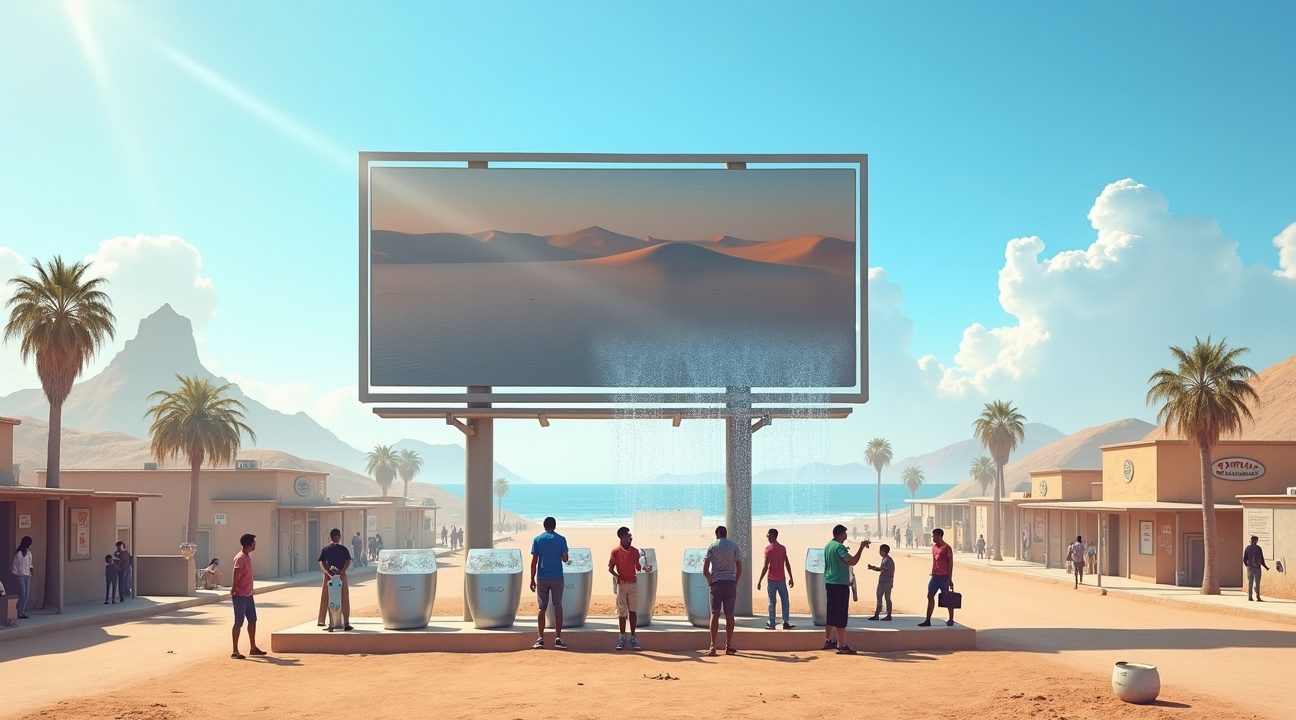
Sources:
KSL
Energy and Climate Partnership of the Americas (ECPA)
Phys.org
Popular Mechanics
TIME
Big Think
Fisher Scientific (Lab Reporter)

